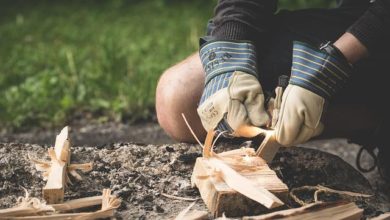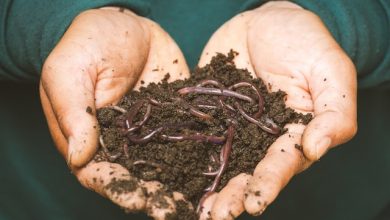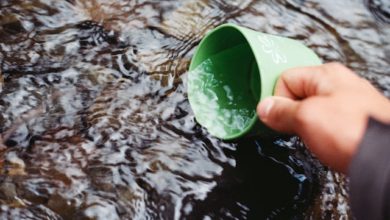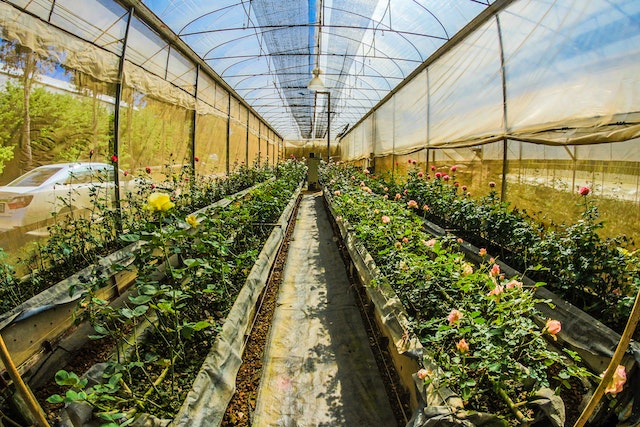
Are You Considering a Greenhouse for Your Backyard?
A backyard greenhouse is essential for any serious prepper. With food shortages predicted in the near future, a greenhouse will help to supplement your families food supply.
You can grow vegetables and fruits that need more warmth and shelter than is typically available in your climate thanks to the ideal growth environment for seedlings and delicate plants.
Having trouble deciding which greenhouse will work best in your backyard? Here is everything you need to know in order to make the best decision, beginning with a short list of factors to take into account:
- Find the best place to put your greenhouse
- Decide what size greenhouse you need
- Choose the best shape for your greenhouse
- Select the best greenhouse material
- Choose the best glass for your greenhouse
- Make sure you have greenhouse ventilation
- Buy greenhouse accessories and furniture
What is the best place to put a greenhouse?
It is crucial to plan where in your backyard you will place your greenhouse before you do anything else. How big it can be and what shape would work best will depend on this.
Decide on a position that:
• Sunny – Select your garden’s most colorful area.
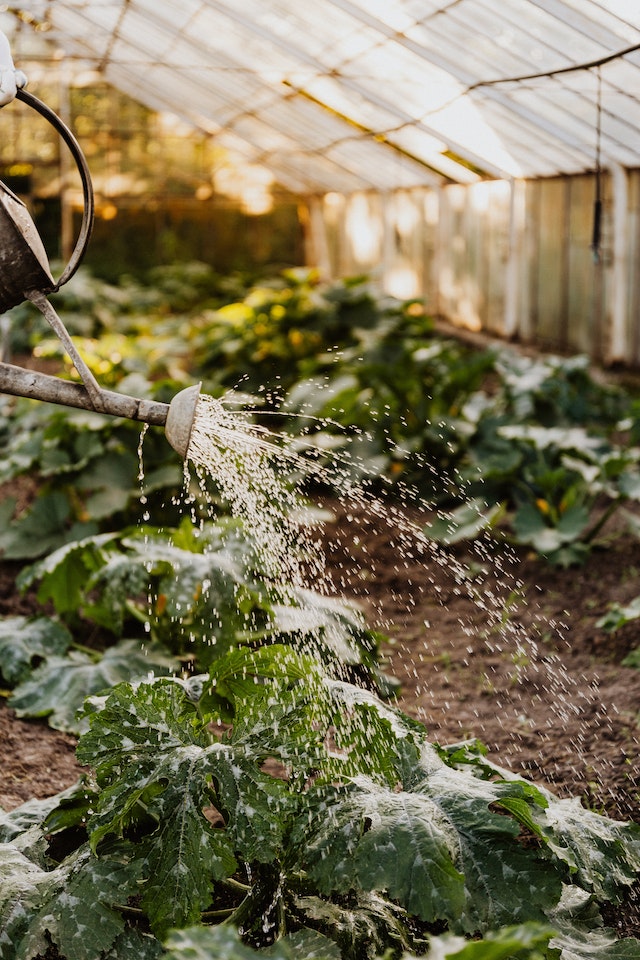
• Sheltered – The effects of easterly and northerly winds are lessened in a protected area, which also reduces temperature swings. Eliminate trees with overhangs since they can damage your property and obstruct the sun.
• Flat – A flat base is recommended for all greenhouses.
• Accessible – To make installation and maintenance simpler, allow a space of at least 1 m around your greenhouse. Additionally, this allows more sunlight to enter.
• Convenient – Consider how far you would like to walk on a bad day to get to your residence. Additionally, choose a location close to utilities if your greenhouse will have heating, lighting, or running water.
What size greenhouse do you need?
The size of their greenhouse was never a point of contention for any grower. Pick the largest greenhouse that your location and budget will permit.
Height is a crucial element. The more light a roof lets in, the higher its peak will be. Pick a greenhouse with an apex that is at least 5 feet high and ideally higher.
The best shape for a greenhouse
Traditionally, greenhouses are available in three shapes:
• Freestanding apex greenhouses
• Lean-tos
• Octagonal/hexagonal greenhouses.
Here’s how to work out which type is best for you:
Freestanding – Freestanding greenhouses that are square or rectangular work well for a variety of purposes and can be placed anywhere in your garden. They have a roof with an apex that allows light to enter from all four sides.
Lean-to – When built against an existing wall in your home or garden, lean-to greenhouses require less space. The downside of this is that they might receive less sunlight than freestanding models.
Octagonal – When situated in the center of your yard, octagonal greenhouses seem quite fashionable. Despite having a greater growing surface, they are larger than conventional standalone ones and take up more space.
The best greenhouse material – aluminum or wood?
Each material has unique qualities and advantages, such as aluminum and wood frames:
- Aluminum greenhouses are sturdy and light, thanks to their metal frames. They are well-built, allowing more light to enter and reducing shadows.
- Green and black are only two of the many colors that metal greenhouses are available in. They also require less maintenance. However, metal is a bad conductor of heat, which causes it to radiate away from the plants inside.
- Wooden frames give your landscape a more natural appearance while being robust, stylish, and constructed of wood. The frames of these greenhouses tend to be larger and more durable than those of metal greenhouses, but the wood requires constant upkeep.
The Best Glass for Greenhouses?
You can get glazing for your greenhouse in a wide variety of forms. Following are each’s advantages:
• Safety glass – For gardens with kids, it is best to use safety glass that will not break. UV light will not cause the glass to break.
• Polycarbonate – In addition to being 200 times stronger than glass and weighing half as much, polycarbonate is also incredibly secure.
Additionally, it is a better insulator than glass and can be treated with UV light to delay deterioration. It is, however, the most expensive choice and simple to scratch.
• Styrene – Styrene is a good insulator, shatterproof, and twice as strong as glass. It is very lightweight. Of all the plastic glazing options, it is the least expensive. It may eventually turn discolored since it is not usually UV-treated.
• Acrylic – Between polycarbonate and styrene, acrylic reaches a good balance. Its price falls in the middle of the two major plastic glazing alternatives and is 10 times stronger than glass. It can also be UV coated.
You must decide on the type of glazing for your greenhouse as well as whether you want a fully or partially glazed structure before making your decision:
• Glass to the ground – The light is let in most by greenhouses with glass panels that reach the ground. They could be more prone to harm from stray footballs or rogue lawnmowers if they are closer to the ground.
• Half-wall or dwarf wall – Low brick or wooden walls surrounding the base of the greenhouse provide a lot of stability. More heat from the sun is also captured by them, keeping plants warmer at night. To acquire the proper amount of light, seedlings must be elevated on a bench.
Greenhouse ventilation
Ventilation is a need in any greenhouse because it allows for the circulation of fresh air and the release of trapped heat, keeping plants from overheating. It is desirable to have roof vents on both sides of the roof, as they are an absolute necessity. Other side vents can be found in some greenhouses.
Remember to open doors and vents in your greenhouse on bright, sunny days and close them at night to maintain a warm environment for your plants.
The best option for monitoring the temperature is to install an automated vent opener that will open and close your vents for you. This will save you the trouble of purchasing a suitable thermometer.
Greenhouse Furniture and Accessories
You will need a few basic tools to start growing once you have chosen a greenhouse.
• Shelving – will expand your growing space and enable you to grow at various levels in your greenhouse. In order to endure greenhouse temperatures and allow for sufficient drainage and air around plants, greenhouse staging is a specially-made product.
• Potting bench – You have a workspace for all of your potting up on a potting bench. It will help eliminate backaches from numerous greenhouse jobs if installed at an appropriate height.
• Water butt – Install a water butt to catch rainwater from the gutters of your greenhouse. If your greenhouse does not already have incorporated gutters, you can retrofit plastic guttering.
Automatic irrigation system – While not necessary, this is a nice accessory for your greenhouse. It allows you to water all your plants at one time.
We trust you have gotten all the information you need to make a greenhouse purchase. Here are our top suggestions in conclusion:
Top Tips for Choosing the Best Greenhouse
- Choose a location for your greenhouse.
- Find an area in your garden that is convenient, sunny, and protected.
- Choose the largest greenhouse that will fit in your yard.
- Depending on your garden, choose the size and style of your greenhouse.
- Consider which glazing choice best fits your garden and price range.
- Make sure there is enough ventilation in your greenhouse.
- Order a potting bench and shelves.
- Install a rain catchment system to begin gathering rainwater.
FAQ
Are backyard greenhouses worth it?
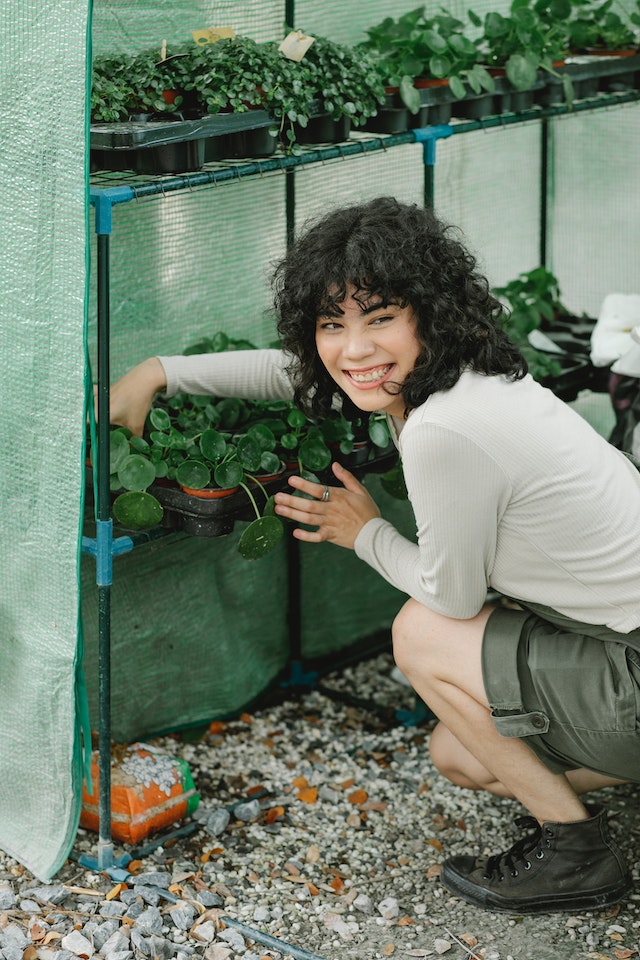
Most gardeners say yes. You can grow a broader range of food and flowers in a greenhouse, and we can experiment with crops that we previously thought were “too fragile.” Stability: A greenhouse provides an environment that is predictable, protecting delicate plants from potentially harmful weather extremes.
Can I put a greenhouse in my backyard?
Typically, you do not require anyone’s approval to construct a greenhouse on your land. On the other hand, some towns have stringent rules about permanent buildings, and you might need to submit applications for licenses or permits or fill out paperwork (which may have filing fees).
Should a greenhouse be in full sun?
If at all feasible, locate a position where the greenhouse will receive at least 6 hours of direct sunlight each day during the winter. The largest side of the greenhouse will receive complete southern sun exposure if it is placed east to west. Grow lights can be installed to make up for the lack of adequate sunlight in the area.
What is a good size for a backyard greenhouse?
In increments of 2 ft (60 cm), greenhouses are available in a variety of widths and lengths. In order to have adequate space to move around, it is preferable to choose one that is at least 6 feet (1.8 meters) broad.
A piece that is 8 feet (2.4 meters) wide will allow you to add staging (shelves) on both sides. In order to let in plenty of light, the eaves should be at least 5 feet (1.5 meters) tall.
Do greenhouses work in winter?
Yes, greenhouses can be used in the winter, but you must make plans for particular crops. Vegetables that thrive best in winter are root and leafy vegetables; if temperatures drop drastically, you might need to add some heat sources.
What shape greenhouse is most effective?
The best shape for a greenhouse
Freestanding – Freestanding greenhouses in the shapes of squares or rectangles are excellent all-purpose structures that may be placed anywhere in your garden.
Lean-to-Freestanding greenhouses in the shapes of squares or rectangles are excellent all-purpose structures that may be placed anywhere in your garden.
Is a glass or plastic greenhouse better?
Better heat insulation is provided by plastic. This applies particularly to polycarbonate-made clear plastic greenhouse films. Plants are considerably more effectively insulated by the product! Plastic sheets retain heat better than glass sheets when compared. Using plastic films instead of glass sheets also helps to reduce heat loss.
Where should you not put a greenhouse?
Because big trees significantly restrict the quantity of sunlight that reaches your plants, it is not a good idea to put a greenhouse underneath any of them. When bird poop and sticky pollen adhere to the glass, this situation grows considerably worse.
Is it cheaper to build a greenhouse or buy one?
If inexpensive materials, like PVC framing and plastic sheeting, are used, building a greenhouse will be less expensive than purchasing one. The cost of purchasing these items separately will typically be less than using greenhouse kit parts.
What is the disadvantage of a greenhouse?
Need continuous supervision, upkeep, and attention. This can result in higher water and electricity costs. It can take away from a garden’s visual attractiveness.
